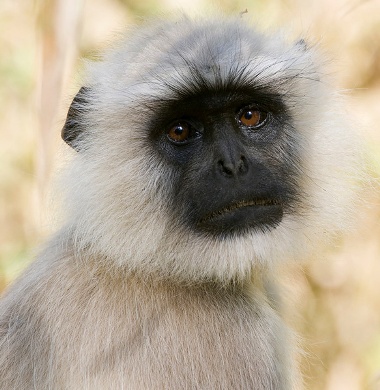Hanuman langur identity crisis might finally be solved: Study
 New Delhi: The long-standing identity crisis of Hanuman langur, the most widespread langurs of South Asia might finally be resolved, a recent study has suggested.
New Delhi: The long-standing identity crisis of Hanuman langur, the most widespread langurs of South Asia might finally be resolved, a recent study has suggested.
Even though it has been extensively studied, the taxonomic status of this species remains unresolved due to incongruence between various classification schemes.
Taxonomy is the branch of science concerned with classification, especially of organisms.
Researchers have divided the Hanuman langur into 3-4 different species based on genetic differences. This mirrors a classification scheme proposed in the 1930s, which relied on differences in physical appearance to distinguish species.
The discovery, according to them, is an important step in identifying unique populations that could be threatened by human activity.
Hanuman langurs are monkeys belonging to the larger taxonomic group Semnopithecus, which is widely distributed in South Asia. These agile animals are found across diverse habitats - from arid lands to forests, and human- dominated landscapes.
Over the years, researchers have struggled to classify Hanuman langurs of peninsular India into smaller taxonomic units. Some scientists have called them a single widespread entity; others have recognised up to seven species based on variation in colour and form, and on specimens representing different populations.
Researchers from the Centre for Ecological Sciences (CES) in Indian Institute of Science, Bangalore (IISc) have attempted to rest this case.
They collected over a hundred faecal samples and a few road-kill tissue samples from Hanuman langurs across peninsular India. They used DNA from these samples to obtain sequences of five different genetic markers - one mitochondrial gene, and two protein-coding and non-coding regions each from nuclear DNA, the researchers quoted by Gubbi Labs say.
The authors grouped Hanuman langur individuals based on similarities in DNA sequence to obtain an family tree that depicts evolutionary relationships. The researchers also measured genetic uniqueness of each group to understand the extent of divergence between groups.
The tree built using nuclear DNA sequences revealed four distinct species that matched a classification scheme proposed seven decades ago. This morphology-based key was confirmed using more exhaustive field observations in a recent study by two of the current authors.
The four groups obtained were - Semnopithecus entellus from northern and central India, S. Hypoleucos from the west coast including Central and Northern Western Ghats; S. Priam from the Deccan plateau, Eastern Ghats, Nilgiris and Southern Western Ghats; and S. Johnii - the morphologically distinct Nilgiri langur population.
The mitochondrial tree failed to separate Nilgiri langurs and S. Priam, while other species showed fuzzy separations in overlapping geographic ranges. This may be a result of hybridisation between species, or an indication of recent divergence where lineages still retain signs of common ancestry, the study said.
Though these Hanuman langur groups are not reproductively isolated, they differ in their habitat specificity and morphology while having unique genetic labels to qualify them as separate species.
The division of Semnopithecus into different species calls for an overhaul of their conservation status in India. While Semnopithecus entellus is protected under the Indian law, the new species need to be listed for protection, says Praveen Karanth - one of the authors of the study and an Associate Professor at CES, IISc.
"... S. Hypoleucos and S. Priam have restricted geographic distributions and might need special conservation attention," said Karanth, associate professor at the Centre for Ecological Sciences (CES).--PTI